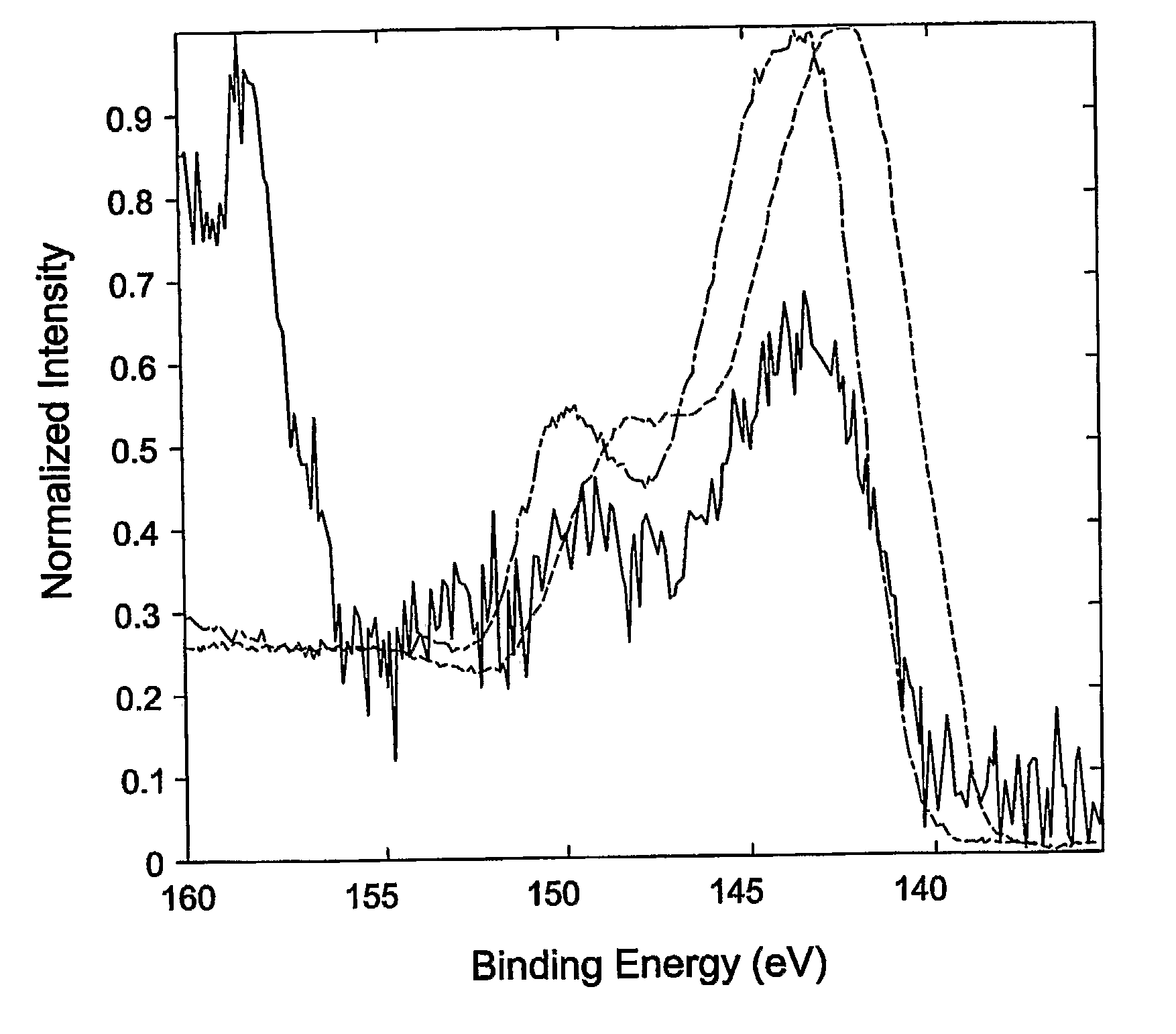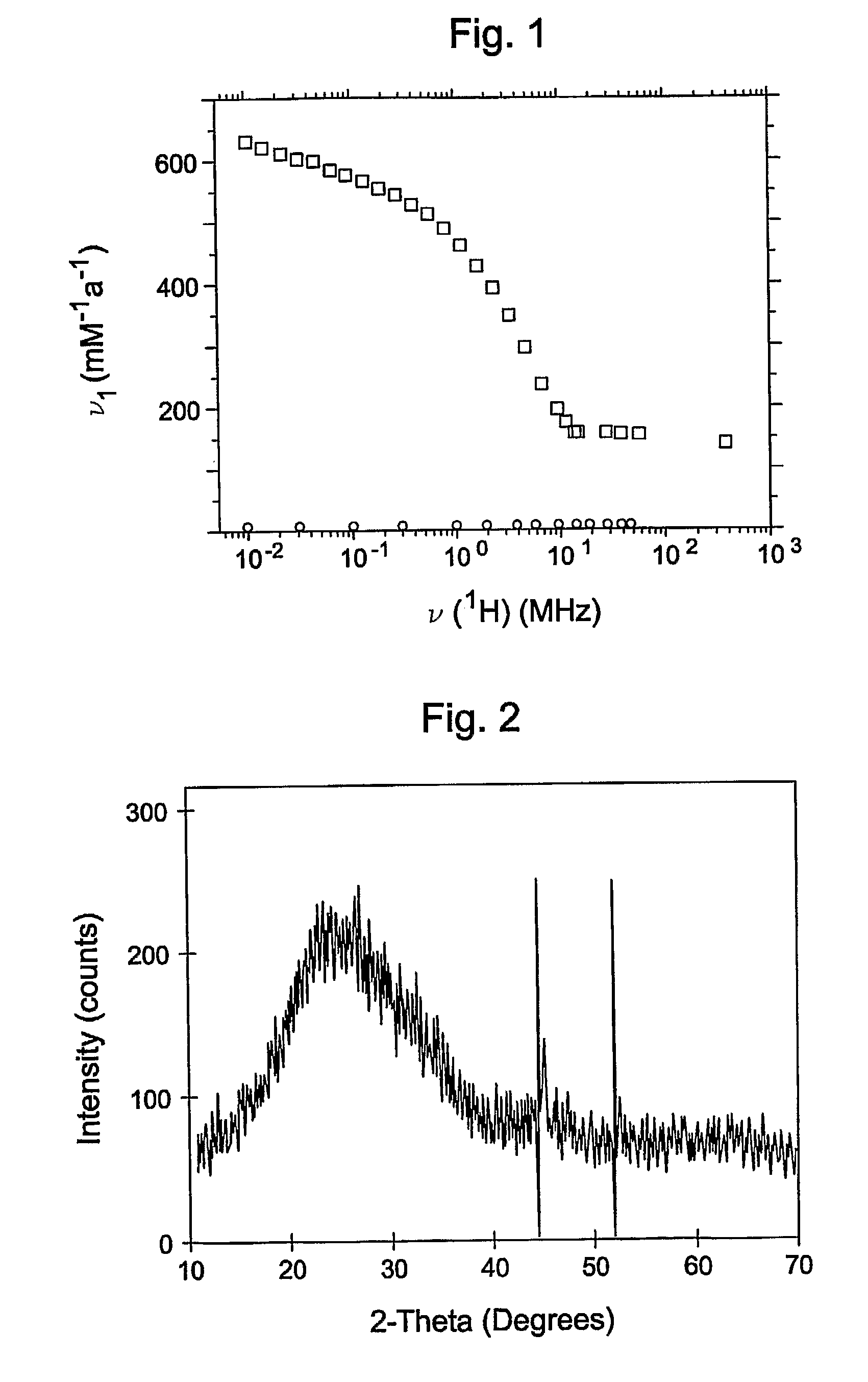Shortened Carbon Nanotubes
a carbon nanotube and nanotube technology, applied in the field of nanotubes, can solve the problems of lack of sufficient relaxivities and radioisotopes in the body, and achieve the effect of reducing toxicity and increasing relaxation potency
- Summary
- Abstract
- Description
- Claims
- Application Information
AI Technical Summary
Benefits of technology
Problems solved by technology
Method used
Image
Examples
example 1
[0035] This example indicated the high relaxivities of filled shortened carbon nanotubes. Cut nanotubes were filled with two different magnetic compounds, iron oxide and gadolinium(III) chloride. The metal contents were determined by inductively coupled plasma (ICP), and r-values (e.g., relaxivity) were calculated on a metal content basis. The measured r1 value (e.g., 0.47 T, 40° C.) for iron-oxide filled nanocapsules (derivatized with a simple hydroxylation process such as with the Fenton reaction (e.g., H2O2+Fe2+→·OH @ pH 3-5) in water was about 40 mM−1s−1. In addition, gadolinium chloride filled nanocapsules, not derivatized but suspended in water with the aid of a surfactant such as sodium dodecylbenzene sulfate, displayed an r1 value of about 150 mM−1s−1. The results are indicated in Table I below. In the table; T1 refers to the longitudinal relaxation time of water protons.
TABLE INanocapsules filled with:T1 / msmetal conc. / mg L−1r1 / mM−1 s−1iron oxide174.57.541.4gadolinium chlo...
example 2
[0036] Shortened carbon nanotubes were explored as nanocapsules for MRI-active Gd3+ ions. The shortened carbon nanotubes were loaded with aqueous GdCl3, and characterization of the resulting Gd3+ showed increased relaxivities.
[0037] The long carbon nanotubes used were produced by the electric arc discharge technique with Y / Ni as the catalyst. The long carbon nanotubes were cut into shortened carbon nanotubes by fluorination followed by pyrolysis at 1,000° C. under an inert atmosphere. The shortened carbon nanotubes were then loaded by soaking and sonicating them in HPLC grade DI water (pH=7) containing aqueous GdCl3.
[0038] To load the shortened carbon nanotubes, 100 mg of shortened carbon nanotubes and 100 mg of anhydrous GdCl3 were stirred together in 100 ml deionized HPLC grade water and sonicated in a 30 W batch sonicator for 60 minutes. The solution was left undisturbed overnight, whereupon the Gd3+ loaded shortened carbon nanotubes flocculated from the solution. The supernata...
PUM
| Property | Measurement | Unit |
|---|---|---|
| length | aaaaa | aaaaa |
| length | aaaaa | aaaaa |
| length | aaaaa | aaaaa |
Abstract
Description
Claims
Application Information
 Login to View More
Login to View More - R&D
- Intellectual Property
- Life Sciences
- Materials
- Tech Scout
- Unparalleled Data Quality
- Higher Quality Content
- 60% Fewer Hallucinations
Browse by: Latest US Patents, China's latest patents, Technical Efficacy Thesaurus, Application Domain, Technology Topic, Popular Technical Reports.
© 2025 PatSnap. All rights reserved.Legal|Privacy policy|Modern Slavery Act Transparency Statement|Sitemap|About US| Contact US: help@patsnap.com



